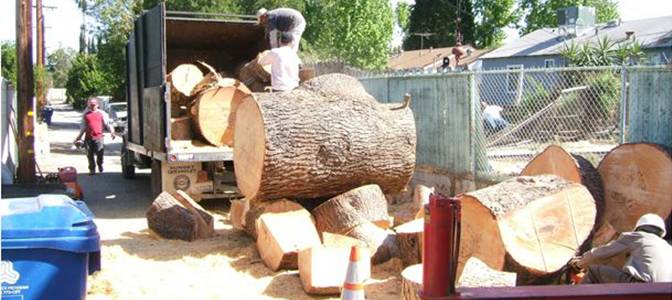Blossom Your Space: Vibrant Flowers for Your Garden Oasis
Welcome to our Sherman Oaks Flowers gallery, where nature’s beauty meets expert landscaping! Immerse yourself in a vibrant tapestry of colors and fragrances as we showcase a stunning array of flowers that will transform your outdoor space into a picturesque haven.
Our carefully curated selection of flowers caters to diverse tastes and preferences, ensuring that there’s something for every garden enthusiast. From the timeless elegance of roses to the whimsical charm of daisies, each bloom is a testament to the meticulous craftsmanship of our landscaping team.
At Sherman Oaks Landscaping, we understand that the right flowers can enhance the visual appeal of any property. Whether you’re looking to create a serene retreat or a lively gathering space, our flowers are chosen not only for their aesthetic appeal but also for their resilience and adaptability to the local climate.
Browse through our gallery to discover inspiration for your garden oasis. We take pride in helping you bring your landscaping dreams to life, one petal at a time. Explore the possibilities, and let Sherman Oaks Landscaping be your partner in creating a floral masterpiece that reflects your unique style and love for the outdoors.
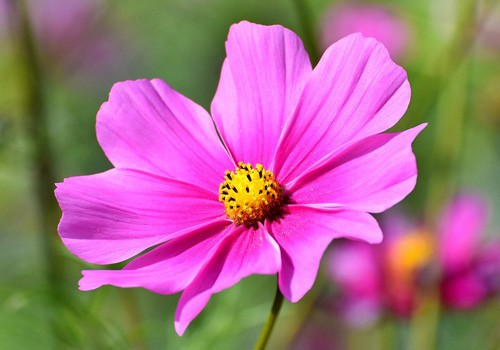
Cosmos
These flowers stay in bloom for months and are easy to take care of even in times of drought or with poor soil conditions. They also attract bees, butterflies, and birds.
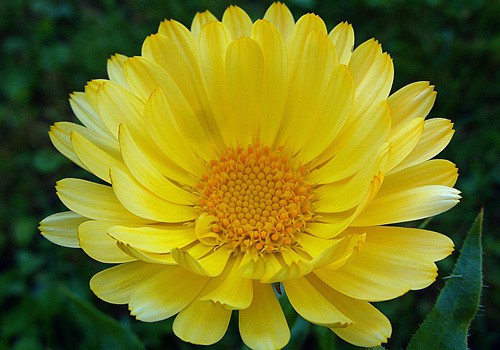
Marigold
The common name "marigold" refers to the Virgin Mary. The most commonly cultivated and used member of the genus is the pot marigold.
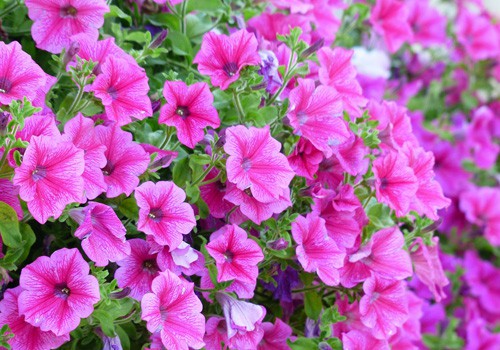
Petunia
Petunias can tolerate relatively harsh conditions and hot climates, but not frost. They need at least five hours of sunlight every day and flourish in moist soil and conditions of low atmospheric humidity.
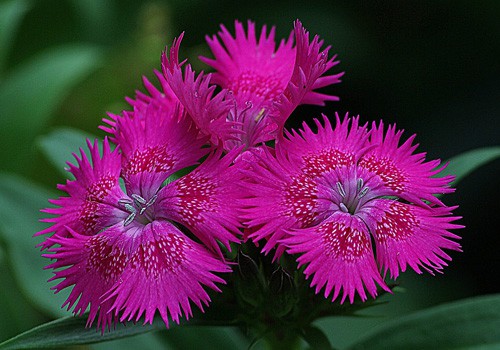
Dianthus
The flowers have five petals, typically with a frilled or pinked margin, and are (in almost all species) pale to dark pink. Some species, particularly the perennial pinks, are noted for their strong spicy fragrance.
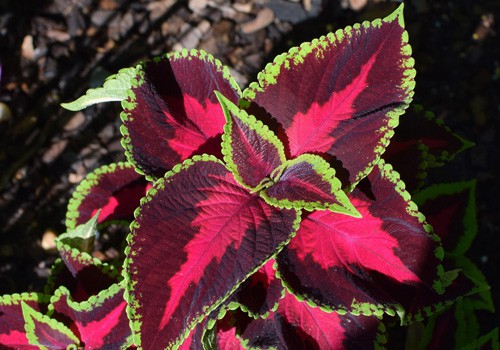
Coleus
This plant prefers bright, but indirect sunlight. If direct sunlight touches the plant's leaves, the colors become less brightly colored. Outside this plant needs total shade or only the most mild morning sunlight. A greenhouse environment is a good choice.
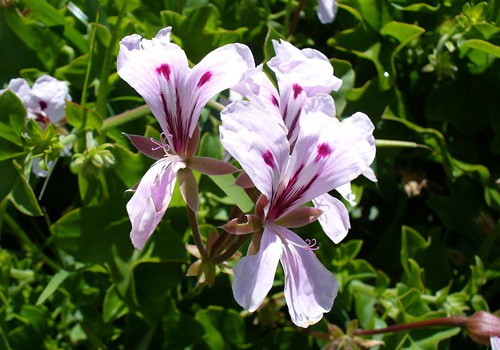
Ivy Geranium
This plant scrambles over the surrounding vegetation and is somewhat succulent. It is slender and smooth, with shallow or deeply five lobed, circular to heart-shaped, somewhat fleshy leaves, sometimes with a differently colored semicircular band.
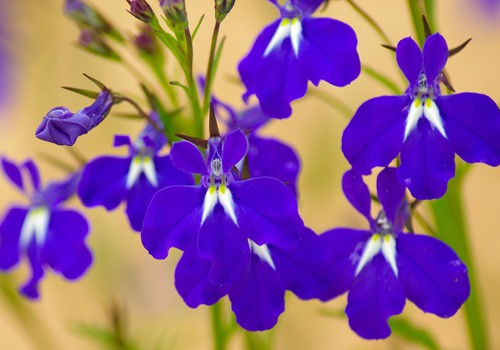
Blue Salvia
The foliage smells of musk, and the large, pale violet to periwinkle blue flowers are attractive to bees, hummingbirds, and butterflies. It is an extremely drought- and heat-tolerant plant that is cultivated in gardens and public landscapes.
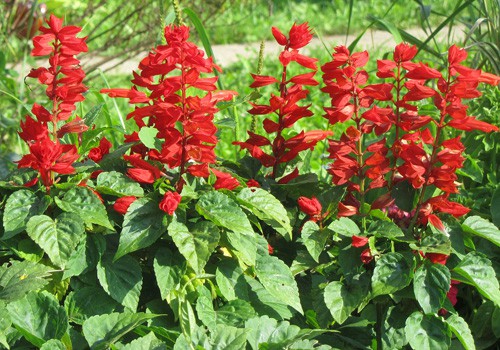
Red Salvia
These flowers are a great way to add a splash of red to your landscape and will serve as a great addition to your yard in summer and early fall. Growing red salvia flowers in full sun will give you the biggest flower output. Make sure to select a location with well-drained soil.
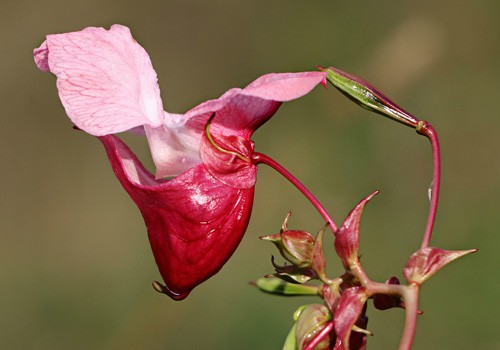
Impatiens
Dependent of the species leaves can be thin to succulent. Particularly on the underside of the leaves, tiny air bubbles are trapped over and under the leaf surface, giving them a silvery sheen that becomes pronounced when they are held under water.
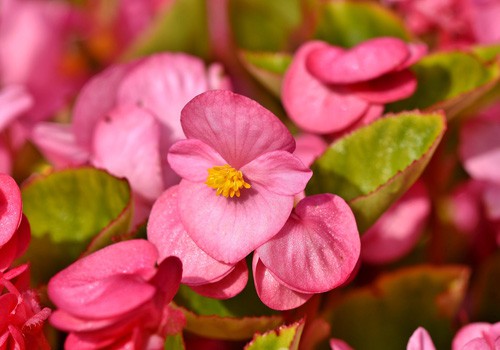
Begonia
The plant is an upright growing, herbaceous perennial that has almost symmetrical succulent pale green to pale reddish brown leaves. It is grown as a groundcover and blooms in the summer or year-round in warmer places.
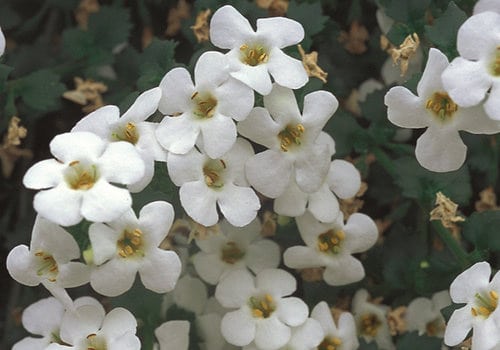
White Bacopa
Bacopa does well in a sunny or partially sunny location that's protected from drying winds. This plant does not like dry soil so water it every day when summer temperatures soar. If it dries out it will stop blooming and it will take a week or two for it to send out a new batch of flowers.
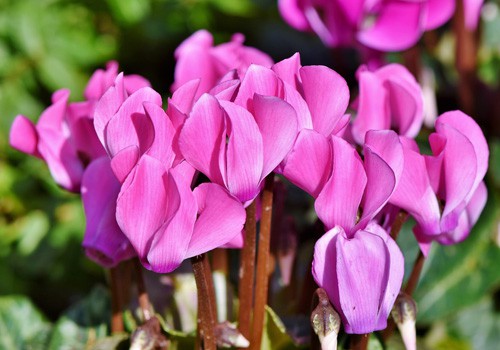
Cyclamen
Cyclamens have a tuber, from which the leaves, flowers and roots grow. In most species, leaves come up in autumn, grow through the winter, and then die in spring, then the plant goes dormant through the dry Mediterranean summer.
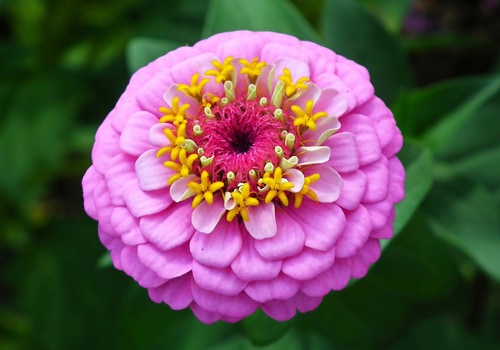
Zinnia
Zinnias are easy to grow with potentially heavy blooms that gush in color. Most species have upright stems but some have a lax habit with spreading stems that mound over the surface of the ground. Much like daisies, zinnias prefer to have full sunlight and adequate water.
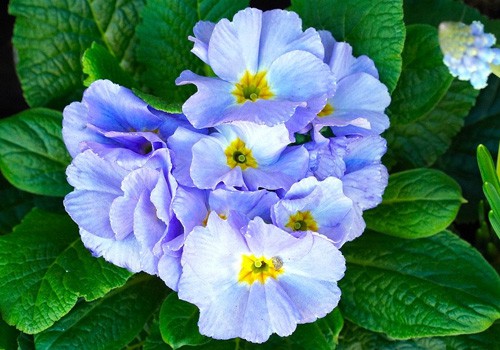
Primrose
Each flower is bisexual, having both stamens and carpels. They have radial symmetry; the petals can be separate or partially or fully fused together to form a tube-shaped corolla that opens up at the mouth to form a bell-like shape or a flat-faced flower.
ABOUT US
Whether you need a deck, a driveway,
block walls, brick patios,fountains,
or even waterfalls-you
can be sure that Sherman Oaks
Landscaping can
get the job done.
PARTNERS
CONTACT INFO
Sherman Oaks Landscaping
Address: 15136 Hartsook Street
Sherman Oaks, CA 91403
Phone: 818-822-2291
Fax: 818-712-0267




